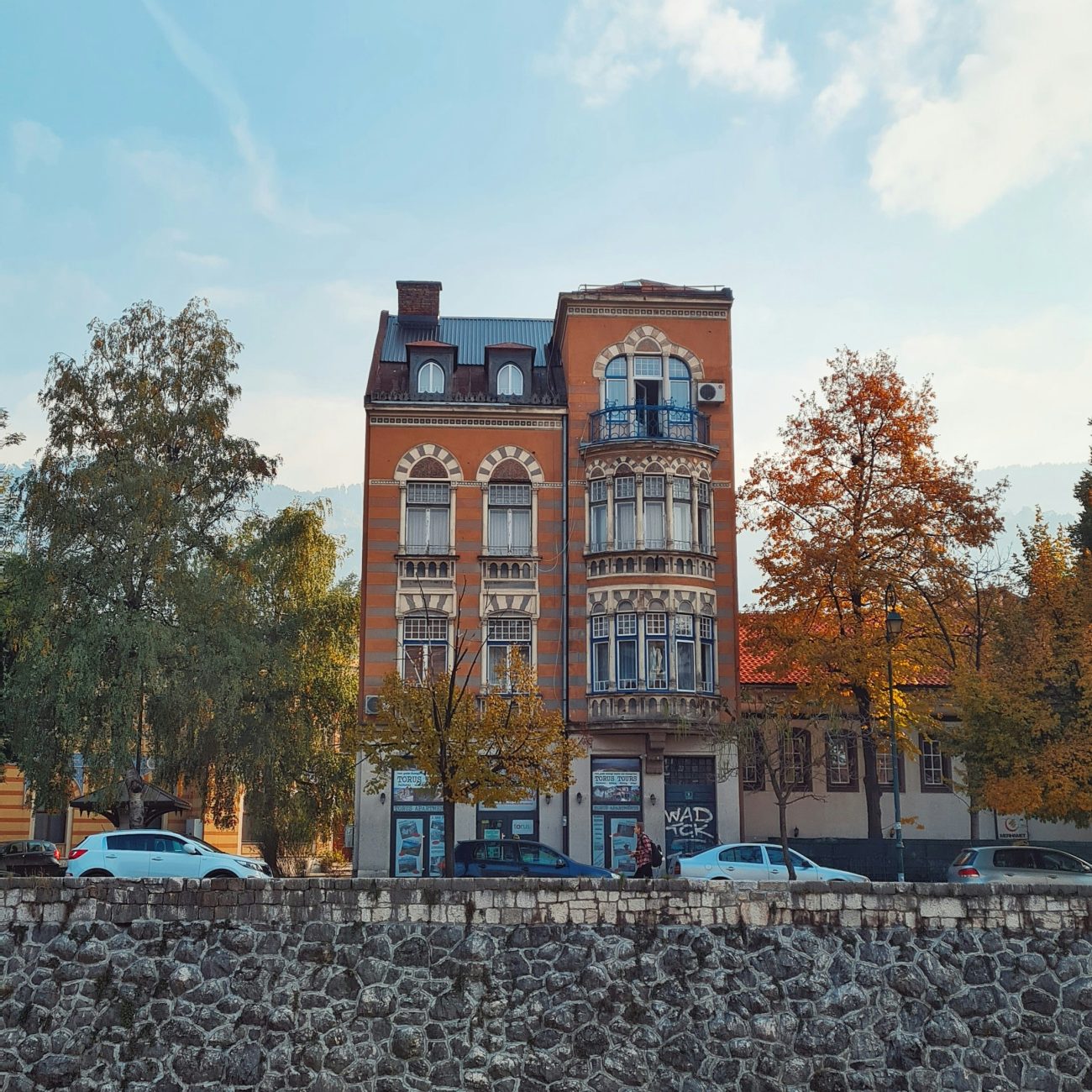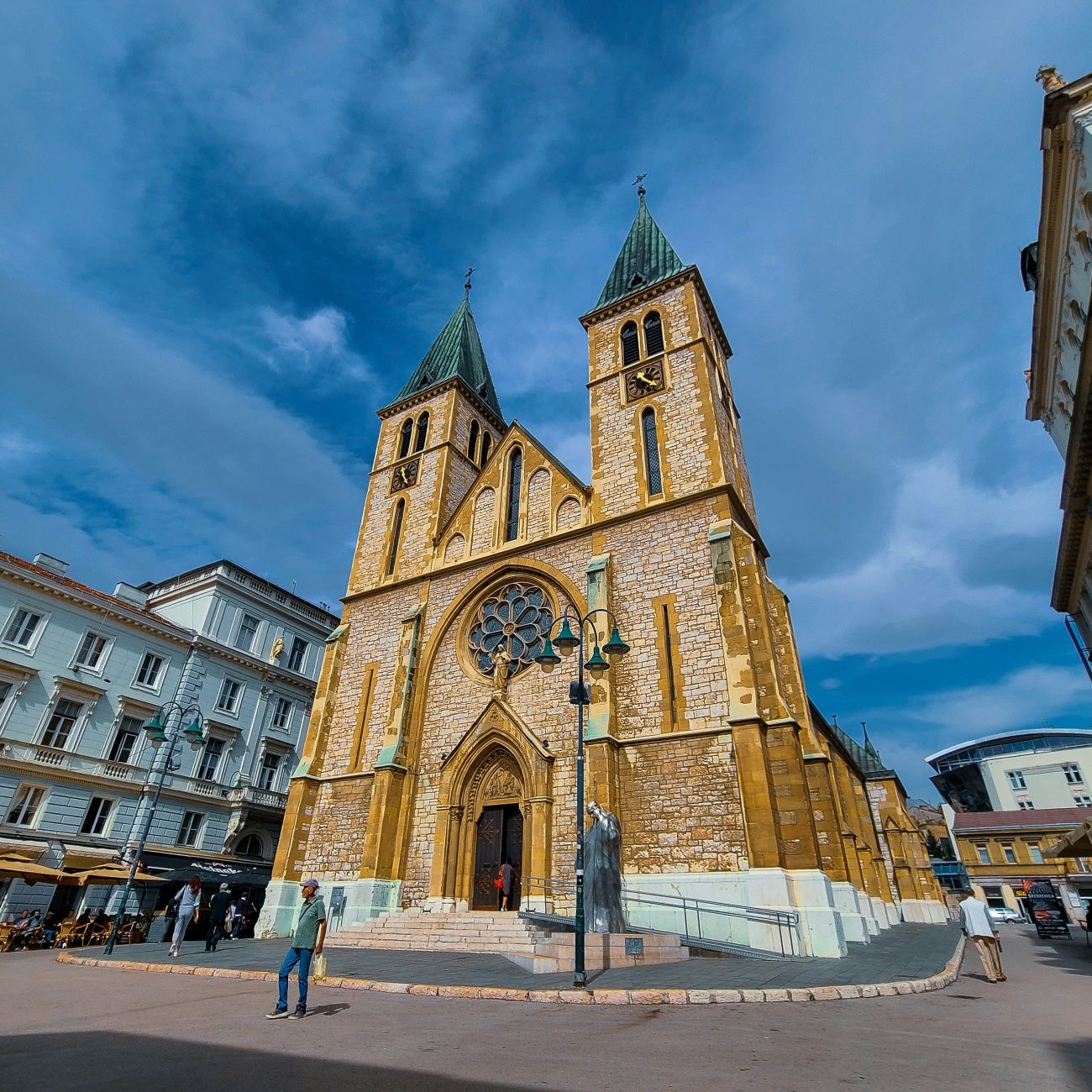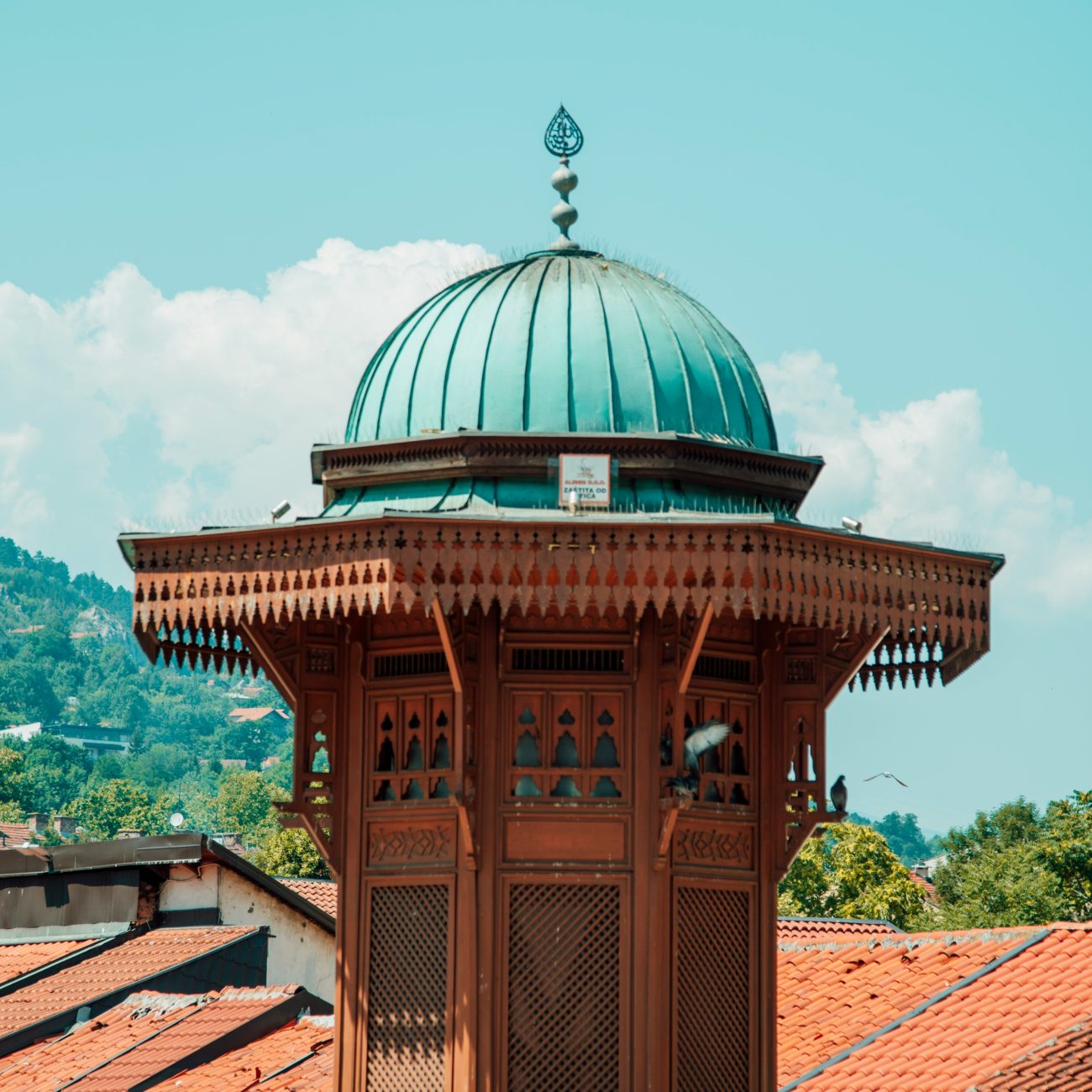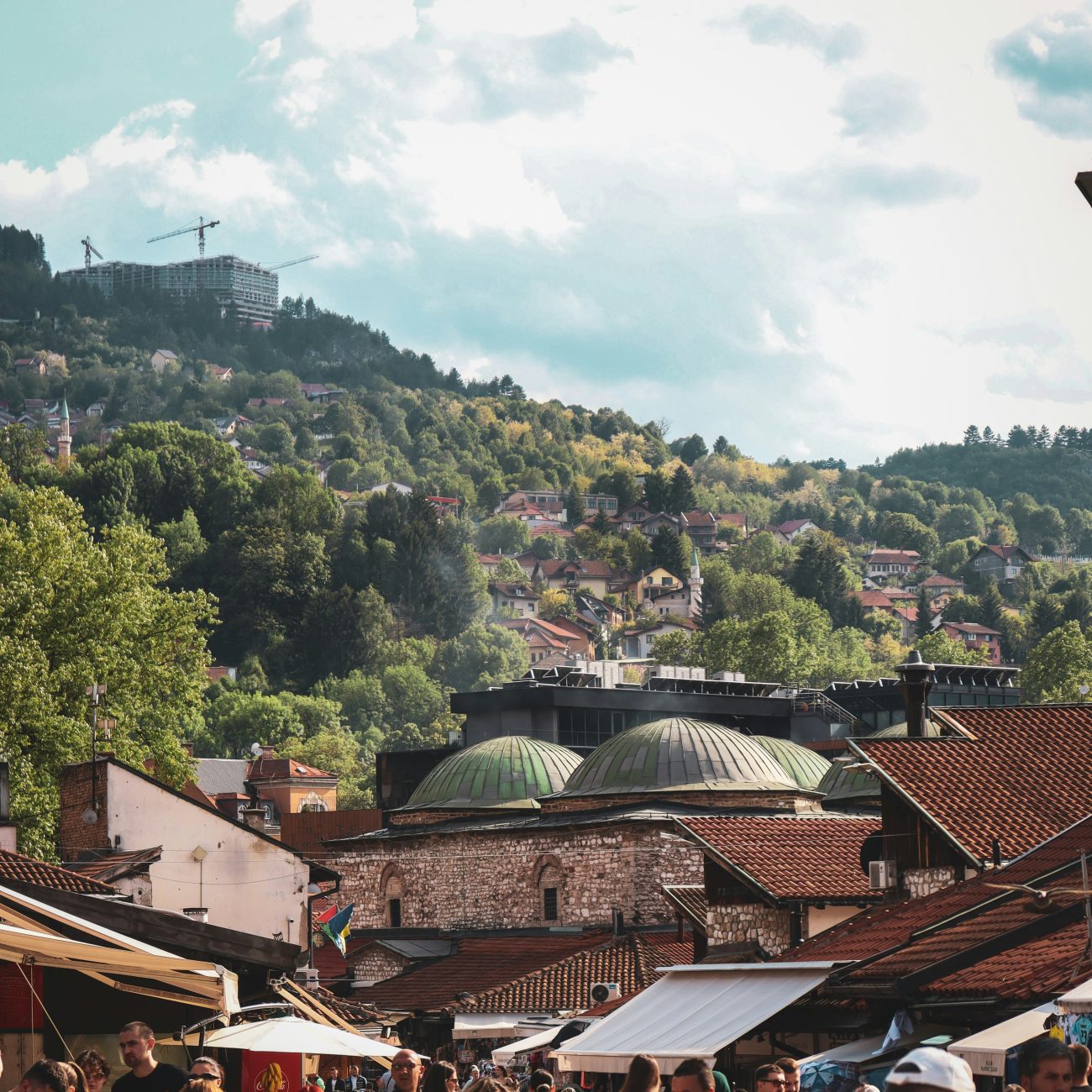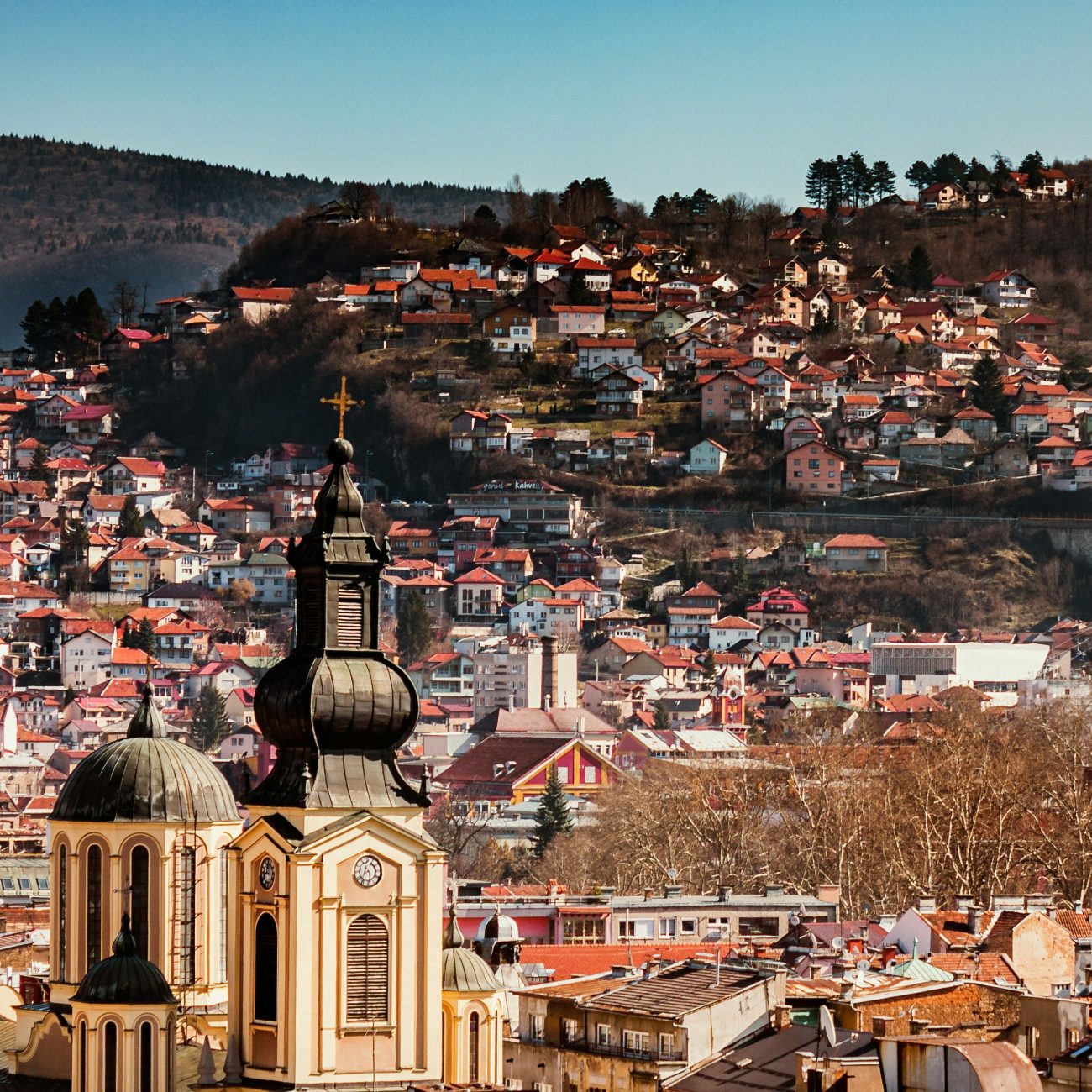Sarajevo is located in the central part of Bosnia and Herzegovina, in the Sarajevo Valley, surrounded by the mountains of Bjelašnica, Igman, Trebević, and Jahorina.
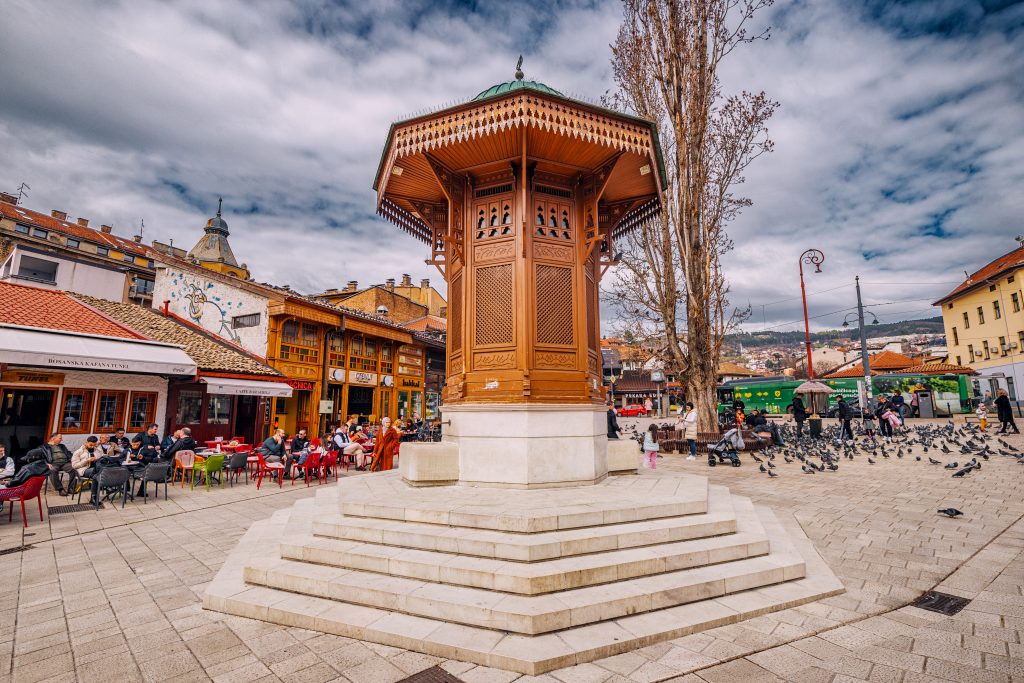
This natural setting gives Sarajevo a rich and diverse landscape – from urban centers to forested areas and mountain peaks. The climate is temperate-continental with distinct seasons: warm summers, snowy winters, and mild spring and autumn. Due to its location, Sarajevo has historically served as an important crossroads between East and West, not only geographically but also culturally.
Air connectivity is provided through Sarajevo International Airport, while railway and road routes link the city to all parts of the country and the region. All of this makes Sarajevo an ideal destination for lovers of nature, history, and authentic urban spirit.
Historical Overview of Sarajevo
Sarajevo is a city with over 550 years of rich history and unique cultural heritage. Founded in the 15th century under Ottoman rule, the city quickly developed into an important administrative and commercial center. Many landmarks from that period have been preserved – such as the Gazi Husrev-bey Mosque, the covered bazaar (Bezistan), and caravanserais – which today attract visitors from all over the world.
In the 19th century, the city entered a new phase under the Austro-Hungarian Empire. During this period, many recognizable buildings in the Secessionist style were constructed, the tram system was introduced, and Sarajevo began to take on a European urban character.
Sarajevo is world-renowned for the assassination of Archduke Franz Ferdinand of Austria-Hungary on June 28, 1914, an event that marked the beginning of World War I. Throughout the 20th century, the city experienced various political regimes, hosted the XIV Winter Olympic Games in 1984, and, unfortunately, endured the longest siege in modern history (1992–1995) during the war in Bosnia and Herzegovina.
Despite everything, Sarajevo has risen from the ashes and today stands as a vibrant, modern city that proudly bears the marks of its past while looking toward the future.
Sarajevo as a Tourist Destination
Sarajevo is one of the most fascinating and original destinations in Southeast Europe. Its charm lies in the fusion of different cultures, religions, and architectural styles that coexist here in perfect harmony. Within just a few minutes’ walk, you can pass through the Ottoman alleyways of Baščaršija, walk by Austro-Hungarian buildings, socialist-era blocks, and modern business centers.
Tourists gladly visit landmarks such as:
Baščaršija – the old bazaar filled with artisans, traditional cafés, and souvenirs,
Vijećnica – a magnificent building from the Austro-Hungarian period, now the city library and a symbol of restoration.
Latin Bridge – the bridge where the assassination took place in 1914.
Tunnel of Hope – a symbol of resistance from the wartime period.
Trebević Cable Car – which leads to the mountain and offers a spectacular view of the city.
Courtyards of mosques and sacred sites of all major religions
In winter, the mountains surrounding Sarajevo (Jahorina, Bjelašnica, Igman) are ideal for skiing, while in summer they are popular for hiking, cycling, and day trips. The culinary scene is rich – from traditional dishes like ćevapi, burek, sogan dolma, and baklava, to modern restaurants and fusion cuisine.
Sarajevo is not just a city to visit – it’s a city to experience.
Interesting Facts About Sarajevo
Sarajevo is the only city in Europe where within a 300-meter radius you can find places of worship of the four major religions – a mosque, a Catholic cathedral, an Orthodox church, and a synagogue. This convergence of different faiths symbolizes the multiculturalism and coexistence that define the city.
The first electric tram in this part of Europe was launched in Sarajevo in 1885 – even before Vienna, as Vienna used Sarajevo as a test market.
Sebilj in Baščaršija is not only a recognizable symbol of the city but also tied to a legend: whoever drinks its water is destined to return to Sarajevo.
Sarajevo was the host of the Winter Olympic Games in 1984.—a major event for the former Yugoslavia that left a lasting impact on the development of sports and infrastructure in the region.
Tunnel of Hope 800 meters long, it was manually dug beneath the airport runway during the Siege of Sarajevo and served as the only way in and out of the city – today, it has been turned into a museum.
